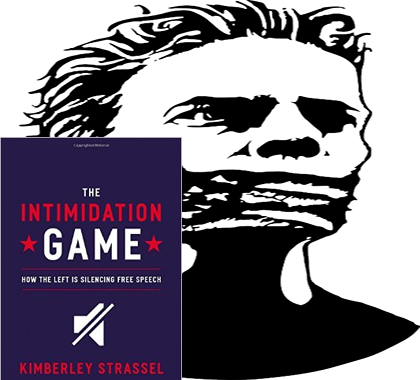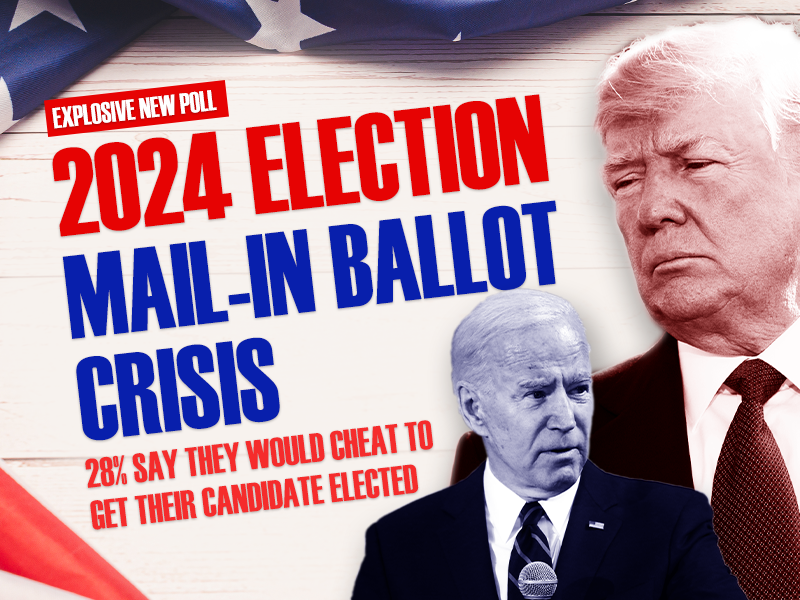Review of The Intimidation Game: How the Left is Silencing Free Speech, by Kimberly Strassel (Twelve Books), 2016, 416 pages, ISBN-13: 978-1455591886; $17.15 on Amazon.com.
The right to engage in political discussions without government interference is one of the most basic American freedoms, but The Intimidation Game, a chilling book by Wall Street Journal journalist and editorial board member Kimberly Strassel, details how the U.S. government works to silence political opponents, using force to scare Americans into keeping quiet.
Strassel’s book documents how the Left uses the legal system to make conservatives fear speaking out. Strassel also covers a number of other examples, including the Internal Revenue Service’s (IRS) decision to use tax audits to frighten and harass law-abiding conservative organizations.
Government Harassment
Throughout the book, Strassel weaves in the tale of California conservative activist Karen Kenney. Kenney’s odyssey, which included having to navigate complex IRS rules and regulations and the endurance and opposition she showed while fighting against IRS agents’ harassment, serves as a framing story for many of Strassel’s other stories depicting how liberals have weaponized the government to fight conservatism.
Strassel draws parallels between Kenney’s battle to seek a tax-exempt status from the IRS for her small nonprofit organization and the larger war on free speech in U.S. history, which goes all the way back to the 18th century, when Founders such as Alexander Hamilton, James Madison, and John Jay wrote The Federalist Papers using pseudonyms to avoid having their livelihoods destroyed.
Chilling Effects
Strassel notes the First Amendment guarantees the right to free speech but is silent on how citizens may use money to facilitate expression of that speech. By detailing how “campaign finance reform” efforts serve to intimidate conservative funders by publicizing the identities of the government’s political opponents, Strassel connects the benign stated goal of “reform” to the real goal: scaring would-be donors into submission.
For decades, left-wing organizations such as the Sierra Club have used their nonprofit status to help elect their favored candidates and influence public sentiment, Strassel writes. Campaign donations and tax-exempt status for nonprofit organizations became problematic only when the U.S. Supreme Court acknowledged conservative organizations have equal footing under the Bill of Rights.
Strassel says by denying or delaying the tax-exempt statuses of conservative organizations that otherwise met the requirements, President Barack Obama’s IRS administrators worked to make potential donors reluctant to write checks to those groups. This soft persecution also disqualified those organizations from applying for many foundation grants.
The Deep State
The U.S. government’s use of regulatory oversight to punish political speech is not confined to IRS rules and audits, Strassel notes.
One concrete example she details is Engelbrecht Manufacturing, a company specializing in production of replacement parts for small guns. Engelbrecht’s donations to conservative causes correlated with multiple audits, bureaucratic inspections, and veiled threats made by government agencies, such as the Occupational Safety and Health Administration; Bureau of Alcohol, Tobacco, and Firearms; and even the Federal Bureau of Investigation.
Without engaging in conspiracy theories, Strassel explains in great detail the stealthy ways in which Obama has used executive orders and liberals in Congress have used their legislative powers to choke off free speech.
For instance, she recounts liberal lawmakers’ war against the American Legislative Exchange Council (ALEC), a prominent conservative organization, describing how U.S. Sen. Dick Durbin (D-IL) led the government and its political allies in attempts to cut off ALEC’s funding by demanding lists that would have revealed private donor information.
Warrior for Free Speech
The details and examples Strassel presents of the government’s war on speech will make readers angry, but her book also includes reasons to be hopeful. Readers will enjoy, for example, the tale of Justin Danhof’s one-man war against the Left’s intimidation of businesses resisting creeping liberalism.
Danhof, general counsel for the National Center for Public Policy Research’s Free Enterprise Project (FEP), fights the Left’s long march through corporate boardrooms by confronting them in corporate meetings, Strassel writes.
“Danhof’s job is to halt the concessions, to fight the proxies—and to do it by beating the left at their own game,” Strassel wrote. “Through FEP, he also buys shares in companies that are under assault, thereby giving him a voice at shareholder meetings. … It distributes information designed to inform the board, shareholders, and consumers about the left’s tactics.”
Ongoing Battle
After detailing decades of political harassment and oppression, the book’s conclusion looks forward to the future of free speech in the United States. Strassel notes on September 11, 2014, 54 members of the U.S. House of Representatives voted in favor of altering the First Amendment to allow the government to set “reasonable limits” on free speech.
Although such efforts are unlikely to succeed in the short term, these blatant assaults on the First Amendment are part of a larger pattern that readers should vehemently oppose, Strassel writes.
The Intimidation Game is a masterpiece, and Strassel is simply the best investigative reporter I have ever had the privilege of reading. This book is on par with other outstanding works, such as All the President’s Men, written by Bob Woodward and Carl Bernstein, and Strassel’s gumshoe reporting style rivals even the greatest U.S. journalists today. Once you start reading, you won’t want to put it down.





